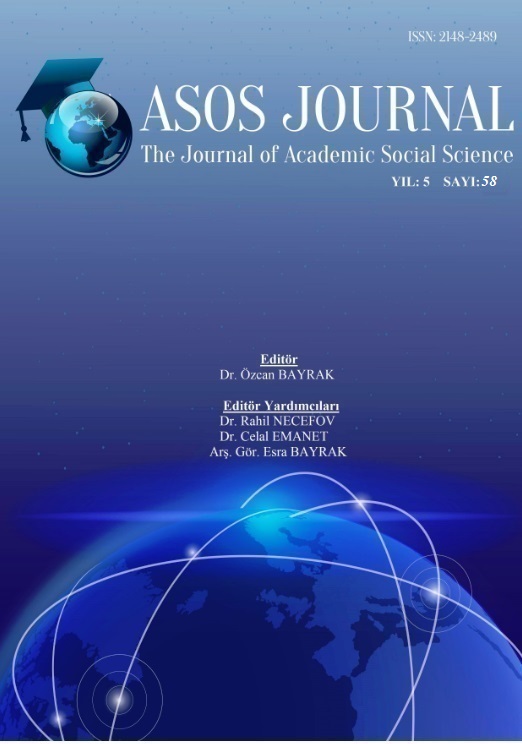Author :
Abstract
Güzel sanatlar, kültürel zenginliğin önemli bir öğesi olması nedeniyle toplumların şekillenmesinde lokomotif bir niteliğe sahiptir. Toplumun güzel sanatlarla etkileşimi öncelikle ve özellikle örgün eğitim kurumlarında verilen görsel sanatlar ve müzik dersleri yoluyla olmaktadır. Bu araştırmanın amacı, okullarda verilmekte olan güzel sanatlar eğitimi ile ilgili derslerin 8. sınıf öğrencileri ve toplumun sosyo-kültürel/sosyo-ekonomik çeşitli kesimlerince nasıl algılandığının ortaya konmasıdır. Çalışmada veriler, araştırmacılar tarafından geliştirilen “Güzel Sanatlar Eğitimi Derslerine Yönelik Görüş Anketi” yoluyla toplanmıştır. Ankette 14 madde bulunmaktadır. Öğrenci ve yetişkinlerden görüşlerini “Katılmıyorum”, “Fikrim yok” ve “Katılıyorum” seçeneklerinden birini seçerek belirtmeleri istenmiştir. Anketin demografik bilgiler kısmında öğrencilere “cinsiyet, anne eğitim düzeyi, baba eğitim düzeyi” sorulurken yetişkinlere “cinsiyet, mezun olunan okul türü, aylık gelir, meslek ve yaş” sorulmuştur. Veri analizinde frekans ve yüzdeler hesaplanmış ayrıca demografik değişkenler bakımından öğrenci görüşlerinin istatistiksel olarak farklılaşıp farklılaşmadığını belirlemek üzere kay-kare testi yapılmıştır.
Keywords
Abstract
The fine arts has locomotive role with regard to formation of the society, because of the fine arts is one of important component of cultural wealth. The interaction between fine arts and society is by visual arts and music lessons in formal education institutions. The aim of this study is to investigate perception of 8th grade students and adults, which belongs different social-cultural and social-economic districts, towards school courses related with fine arts. The data in this study was collected by “Questionnaire for Fine Arts Courses Views”. There is 14 items in this questionnaire. It was asked students and adults to point out their views about fine arts by selecting one of options of “not agree”, “no idea” or “agree”. While it was asked students “gender, education level of mother, education level of father”, it was asked adults “gender, graduate level, monthly income, job and age” in questionnaire’s demographic variables. Data analyses was conducted by calculating frequency and percentage and chi-square test for determining whether or not there is statistical difference between students’ views based on demographic variables.





